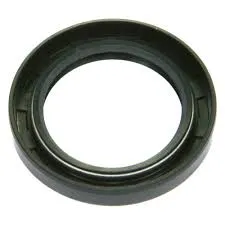9 月 . 29, 2024 08:34 Back to list
Hydraulic Oil Seals for Enhanced Performance and Reliability in Fluid Systems
Understanding Oil Seal Hydraulics A Key Component in Fluid Power Systems
Oil seals, also known as hydraulic seals, are essential components in hydraulic systems, playing a critical role in maintaining the efficiency and functionality of various machinery. These seals are designed to contain hydraulic fluids, preventing leakage while also protecting sensitive components from contaminants such as dirt, dust, and moisture. In this article, we will explore the importance of oil seals in hydraulic applications, their types, materials, and best practices for maintenance.
The Role of Oil Seals in Hydraulic Systems
In hydraulic systems, oil seals serve two primary purposes sealing and containment. They ensure that hydraulic fluid remains within designated chambers, allowing for smooth operation of machinery such as hydraulic cylinders, pumps, and motors. Leakage of hydraulic fluid not only leads to reduced efficiency but also poses safety hazards and environmental risks. By preventing fluid loss, oil seals help maintain optimal pressure levels, which are critical for the effective operation of various hydraulic processes.
Additionally, oil seals protect hydraulic components from external contaminants. Any foreign particles that invade the hydraulic system can cause wear and tear on vital parts, leading to premature failure. Oil seals create a barrier that minimizes the entry of these harmful substances, thereby prolonging the life of machinery and reducing maintenance costs.
Types of Oil Seals
There are several types of oil seals used in hydraulic applications, each designed for specific functions and operating conditions. Some of the most common types include
1. Rotary Oil Seals Used in applications where the shaft rotates, these seals have a lip that makes contact with the shaft, creating a tight seal that prevents fluid leakage.
2. Static Oil Seals These seals are used in applications where there is no movement between the sealing surfaces. They are typically found in flanged joints or connections that are rigid.
3. U-Cups Shaped like a U, these seals provide excellent sealing performance in both low and high-pressure applications. They are often used in hydraulic cylinders to prevent fluid from escaping.
4. V-Rings These seals are mounted on shafts and provide an axial seal, preventing contaminants from entering and fluid from leaking out.
Materials Used in Oil Seals
oil seal hydraulic

The choice of material for oil seals is crucial to their performance and longevity
. Common materials include- Nitrile Rubber (NBR) This is one of the most widely used materials for oil seals due to its excellent resistance to petroleum-based oils and hydraulic fluids.
- Fluoroelastomers (FKM) Often used in high-temperature applications, FKM seals offer superior chemical resistance, making them ideal for harsh environments.
- Polyurethane (PU) Known for its flexibility and durability, PU seals are commonly used in dynamic applications where movement is frequent.
Best Practices for Maintenance
To ensure the longevity and effectiveness of oil seals, regular maintenance is vital. Here are some best practices
1. Regular Inspections Conduct routine checks for signs of wear and damage. Look for any leaks or signs of fluid contamination that could indicate seal failure.
2. Proper Installation Ensure that oil seals are installed correctly; improper installation can lead to premature failure. Follow manufacturer guidelines for torque specifications and alignment.
3. Maintain Cleanliness Keep the area around the seals clean to prevent dirt and debris from entering the hydraulic system. Use dust covers where applicable and ensure clean handling during repair or replacement.
4. Monitor Operating Conditions Be aware of the temperature and pressure conditions within the hydraulic system. Operating outside recommended limits can shorten the lifespan of oil seals.
Conclusion
Oil seals are an integral component of hydraulic systems, ensuring fluid retention and contamination prevention. By understanding their importance, types, materials, and maintenance practices, operators can significantly enhance the performance and durability of their hydraulic machinery. Investing in quality oil seals and adhering to best practices in their maintenance can lead to a more efficient and cost-effective operation, minimizing downtime and enhancing productivity.